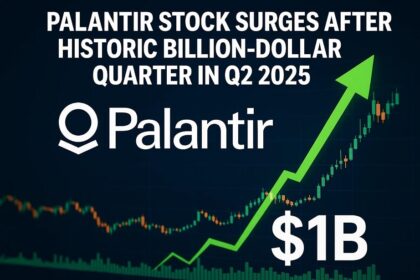Biotech Firm Rebrands as ETHZilla with $419M Ethereum Treasury: A Bold Pivot to Blockchain
In a groundbreaking shift, Nasdaq-listed biotech company 180 Life Sciences has rebranded as ETHZilla Corporation, redirecting its focus from biotechnology to a cryptocurrency-driven treasury strategy centered on Ethereum (ETH). The company has amassed 94,675 ETH, valued at approximately $419 million, through a $565 million capital raise, positioning itself as one of the largest corporate Ethereum holders. This move, announced on August 18, 2025, marks a dramatic pivot toward decentralized finance (DeFi) and highlights Ethereum’s growing appeal as a corporate treasury asset. This article provides a detailed analysis of ETHZilla’s transformation, its strategic vision, financial implications, and the broader impact on the crypto and biotech sectors, complete with data tables and FAQs.
Overview of the Rebranding and Investment
ETHZilla Corporation, formerly 180 Life Sciences, completed its rebranding on August 18, 2025, with its stock and warrants now trading under the Nasdaq tickers ETHZ and ETHZW, respectively. The company raised $565 million through a $425 million private investment in public equity (PIPE) offering and a $156.25 million convertible note offering. Of this, $419 million was used to acquire 94,675 ETH at an average price of $3,902.20, with the remaining $187 million held in cash equivalents. The deal, backed by over 60 institutional and crypto-native investors, including Polychain Capital, Electric Capital, and Founders Fund, closed on August 1, 2025.
ETHZilla’s strategy goes beyond holding Ethereum passively. Partnering with Electric Capital, the firm aims to generate 3-10% annual yields through on-chain activities like staking, lending, liquidity provisioning, and bespoke DeFi agreements. A new DeFi Council, Etherealize, led by founders of Ethereum protocols like Lido and EigenLayer, will guide treasury deployment. This pivot repositions ETHZilla as a flagship public company for Ethereum-based treasury management, while it continues to monetize legacy biotech and iGaming assets.
Historical Context: From Biotech to Blockchain
Founded as 180 Life Sciences, the company focused on therapies for inflammation and fibrosis, operating in the biotech sector with a modest market presence. Its stock (ATNF) had declined over 99% from its all-time high, reflecting challenges in biotech R&D. The rebranding to ETHZilla signals a complete overhaul, driven by economic uncertainties and the allure of Ethereum’s growth potential. The PIPE offering, priced at $2.65 per share, saw shares surge 10% to $3.22 on July 30, 2025, though they later settled at $2.69. This strategic shift mirrors moves by firms like SharpLink Gaming, which holds 438,000 ETH, but ETHZilla’s active DeFi strategy sets it apart.
Detailed Breakdown of ETHZilla’s Strategy
Financial Structure
- Funding: $425 million via PIPE (stock sales at $2.65/share) and $156.25 million via convertible notes, totaling $565 million.
- ETH Holdings: 94,675 ETH, purchased at $3,902.20 each, now valued at $419 million (based on Ethereum’s price of $4,400 as of August 12, 2025).
- Cash Reserves: $187 million in USD equivalents for operational flexibility.
- Investors: Over 60 entities, including Polychain Capital, Founders Fund, Electric Capital, and DeFi leaders like Lido’s Konstantin Lomashuk and Compound’s Robert Leshner.
Yield Generation
ETHZilla has partnered with Electric Capital to manage its Ethereum treasury, employing a “differentiated on-chain yield generation program.” This includes:
- Staking: Earning rewards by validating Ethereum transactions.
- Lending: Providing ETH to DeFi protocols for interest.
- Liquidity Provisioning: Supporting decentralized exchanges for fees.
- Private Agreements: Custom DeFi strategies to maximize returns while managing risks.
The company projects 3-10% annual yields, aiming to generate positive EBITDA and free cash flow (FCF) for reinvestment. This contrasts with traditional treasury models, like Bitcoin holdings by Tesla, which focus on passive appreciation.
Governance
Etherealize, a DeFi Council with Ethereum protocol founders, will advise on treasury deployment, ensuring alignment with blockchain innovations. McAndrew Rudisill, Executive Chairman, emphasizes that ETHZilla aims to be a “market-leading vehicle” for public market investors to gain Ethereum exposure.
In-Depth Analysis: Trends and Implications
Strategic Rationale
ETHZilla’s pivot reflects a broader trend of non-crypto firms embracing digital assets. Ethereum’s market cap, which surged from $423 billion to $567 billion in a week (August 2025), underscores its appeal as a store of value and DeFi platform. The move hedges against inflation, diversifies assets, and attracts crypto-savvy investors. Standard Chartered estimates corporate Ethereum treasuries now hold 1% of circulating supply, potentially reaching 10% if adoption grows.
Market Impact
- Positive: The $419 million ETH purchase could boost demand and market visibility, reinforcing Ethereum’s legitimacy. Institutional backing from Polychain and Founders Fund validates the strategy.
- Risks: Ethereum’s volatility (e.g., price swings from $3,770 to $4,400 in weeks) exposes ETHZilla’s balance sheet to risk. Regulatory uncertainties, shareholder dilution from the PIPE, and smart contract vulnerabilities are concerns.
Industry Trends
ETHZilla joins firms like SharpLink Gaming and BitMine Immersion (1.5 million ETH, $6.6 billion) in building crypto treasuries. Unlike Bitcoin-focused strategies, ETHZilla’s active DeFi participation leverages Ethereum’s utility in decentralized apps and smart contracts. This could inspire other corporations to explore blockchain, especially as Ethereum’s ecosystem grows with stablecoins and tokenized assets.
Challenges
- Volatility: Ethereum’s price fluctuations could impact financial stability.
- Regulatory Risks: Evolving crypto regulations may complicate treasury management.
- Operational Shift: Diverting focus from biotech R&D could alienate traditional investors.
- Execution: Managing a large ETH treasury requires sophisticated risk management.
Future Projections
ETHZilla plans to raise an additional $150 million via debt securities to expand its ETH holdings, potentially reaching 120,000 ETH by 2026. If Ethereum’s price continues its upward trajectory (e.g., hitting $5,000), the treasury could exceed $600 million. The firm’s DeFi strategy may set a precedent for public companies, though success hinges on Ethereum’s market performance and regulatory clarity.
Table: ETHZilla’s Financial Snapshot (August 2025)
| Metric | Value | Details |
|---|---|---|
| Total Capital Raised | $565M | $425M PIPE + $156.25M convertible notes |
| ETH Holdings | 94,675 ETH | Acquired at $3,902.20, valued at $419M |
| Cash Equivalents | $187M | For operational flexibility |
| Yield Strategy | 3-10% | Staking, lending, liquidity provisioning |
| Investors | 60+ | Polychain, Founders Fund, Electric Capital, DeFi leaders |
| Stock Price (July 30) | $2.69 | Up 10% intraday, post-announcement |
Table: Comparative Corporate ETH Holdings (August 2025)
| Company | ETH Holdings | Value (Approx.) | Strategy |
|---|---|---|---|
| BitMine Immersion | 1,500,000 | $6.6B | Mining, passive holding |
| SharpLink Gaming | 438,000 | $1.9B | Staking, yield generation |
| ETHZilla | 94,675 | $419M | Active DeFi, yield-focused |
| Coinbase | 137,300 | $604M | Exchange operations |
| Bit Digital | 50,000+ | $220M | Mining, treasury |
FAQs
What is ETHZilla’s new focus?
ETHZilla has shifted from biotech to an Ethereum-focused treasury strategy, holding 94,675 ETH ($419M) and pursuing DeFi yield generation.
Why did 180 Life Sciences rebrand?
The rebrand to ETHZilla reflects a pivot to blockchain, leveraging Ethereum’s growth to diversify assets and attract new investors.
How much Ethereum does ETHZilla hold?
94,675 ETH, valued at $419 million, acquired at an average price of $3,902.20.
Who manages ETHZilla’s treasury?
Electric Capital oversees the ETH treasury, implementing staking, lending, and liquidity provisioning for 3-10% yields.
What is the funding structure?
ETHZilla raised $565 million: $425 million via PIPE at $2.65/share and $156.25 million via convertible notes.
Who backed the deal?
Over 60 investors, including Polychain Capital, Founders Fund, and DeFi leaders from Lido, EigenLayer, and Compound.
What are the risks?
Ethereum’s volatility, regulatory uncertainties, smart contract risks, and shareholder dilution from the PIPE are key concerns.
How does this impact Ethereum’s market?
The $419 million purchase could drive demand and legitimacy, though it’s a small fraction of Ethereum’s $567 billion market cap.
Will ETHZilla abandon biotech?
No, it plans to monetize legacy biotech IP and continue iGaming operations alongside its Ethereum strategy.
What’s next for ETHZilla?
The firm aims to raise $150 million more via debt to buy additional ETH and establish itself as a leading Ethereum treasury vehicle by 2026.












